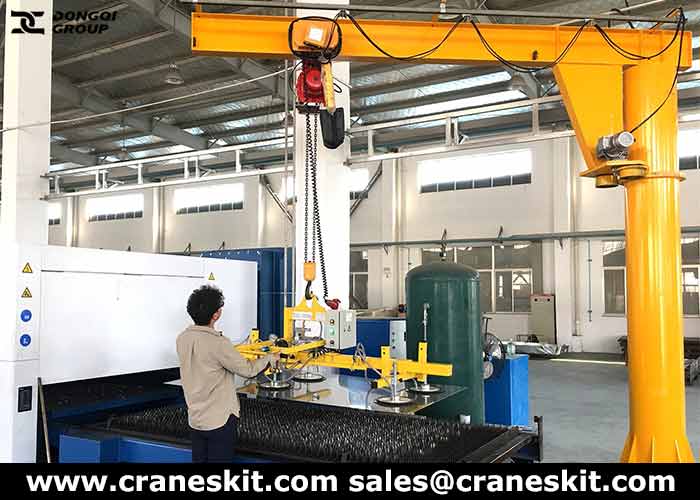If your industry requires specialist lifting solutions, a jib crane can deliver exactly what you need. For fast, agile and adaptable lifting solutions, few options can beat that of a jib crane machine. They can be used in a variety of environments and can be personalized to meet your every lifting need.
How do Jib Cranes Operate?
They consist of three core components that ensure they operate safely, efficiently and ergonomically:- Masts – this is the vertical part of the jib crane, if it is floor mounted. Can also be wall mounted and can be adapted to fit most environments.
- Booms/jibs – the horizontal arm that supports the lifting device, which is attached to the mast or is wall mounted.
- Trolleys – these move up and down the boom or jib to give horizontal travel, keeping the hoist and lifting hook in place.

How to Use a Jib Crane Safely?
Can improve safety and greatly enhance efficiency but they have to be used correctly. Here are some safety tips so you can ensure it’s being used correctly:- Make sure the crane is mounted securely (professional installation is usually recommended).
- Inspect the crane before general use, looking for common things that could cause issues like loose bolts, damage to the crane body, or debris on the runway.
- Ensure you achieve a stable lift – the best way to do this is to position the jib arm directly over the load, as close to its centre of gravity as possible.
- Ensure the beam trolley doesn’t crash when it reaches the runway end stops as this can destabilize the load.
- Do not allow the load to be dragged along the floor by the crane.
- Work at a slow, steady pace and test lifts first, taking the time to fully stabilize loads before operating the crane.
- Ensure nobody walks underneath the crane once it has been loaded, and when a lift is taking place.
- Ensure are only ever operated by trained, competent operators and ensure operators are supervised where necessary.
没有评论:
发表评论